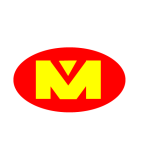Zirconia ceramic grinding wheel/engineering ceramic non-metallic material grinding wheel/Double bevel grinding wheel
Negotiable /Piece
Min.Order:5 Pieces
Quick Details View All >
Henan kemei Abrasives Co., Ltd.
Guideway grinding wheel/Linear slide groove grinding wheel/Resin grinding wheel
Bowl grinding wheel/HSS,stainless steel special grinding wheel/Resin CBN grinding wheel
Cast Iron Grinding Disc/Deburring Grinding Disc/Brazed Diamond Grinding Disc
Bearing raceway grinding wheel/Super hard material grinding wheel
Product Details
The crystals of engineering ceramics are composed of covalent bonds, ionic bonds or a mixture of the two. S, N, and SiC are mainly covalent bonds, and A120 and Zr02 are mainly ionic bonds. A covalent bond is a bond shared between 2 atoms and 2 atoms. Ceramics with strong covalent bonds have good plasticity, and their fracture toughness does not decrease even at high temperatures. Ionic bonding is the combination of electrostatic attraction between anions and cations. The destruction strength of ionic bonding ceramics depends on the temperature. The temperature reaches 1000℃, there is obvious creep. The directionality of the covalent bond gives the crystal a higher resistance to lattice distortion and the ability to hinder the development of dislocations, and the ceramic presents a high hardness and elastic modulus. The flexural strength of Si, N, and SiC with high covalent bonds is 400~600MPa at a high temperature of 1200℃, while the high ion valence A1, 0 and ZrO2 are only 200~400MPa. Compared with Si, Na and SiC, the high temperature bending strength of SiC is lower than that of Si, and N4 is higher.
Fracture toughness is the resistance value against crack propagation. The greater the value of ceramic fracture toughness, the stronger the ability to resist cracking. The fracture toughness value is small and easy to break. The fracture toughness of SiC and A203 is small, and it is easy to crack and break during grinding. ZrO has the largest toughness value, and it is easy to form plastic flow type damage when grinding. Si and N are between SiC and Zr0, which are mixed forms of cracking damage and plastic flow damage during grinding.
Compared with metal materials, ceramics have excellent heat resistance, wear resistance, corrosion resistance, strength-to-weight ratio, rigidity ratio, and low thermal expansion. They are used as materials for engineering materials and precision machine parts. However, because it is a hard and brittle material, it has low reliability and has problems such as difficult processing compared with metal materials.
It is the characteristics and uses of engineering ceramics. Bearings in precision machinery utilize the light weight, elastic modulus, wear resistance, corrosion resistance, and heat resistance of ceramics. Flat plates and block gauges make use of the ceramic's low thermal expansion, low thermal conductivity, light weight, high rigidity, wear resistance and high hardness. In addition, precision ceramics are also used in the machine bed, worktable, guide surface, hydrostatic guide rail, bearing, and spindle table in machine tool parts.
Welcome inquiry~
Website: /
Email:kmabrasives@hotmail.com
Phone No.:+8618838275294
WhatsApp:+8618838275294
Wechat:grindingwheel8888
Contact Supplier

You May Like




New Products
Popular Searches
Recommended Products